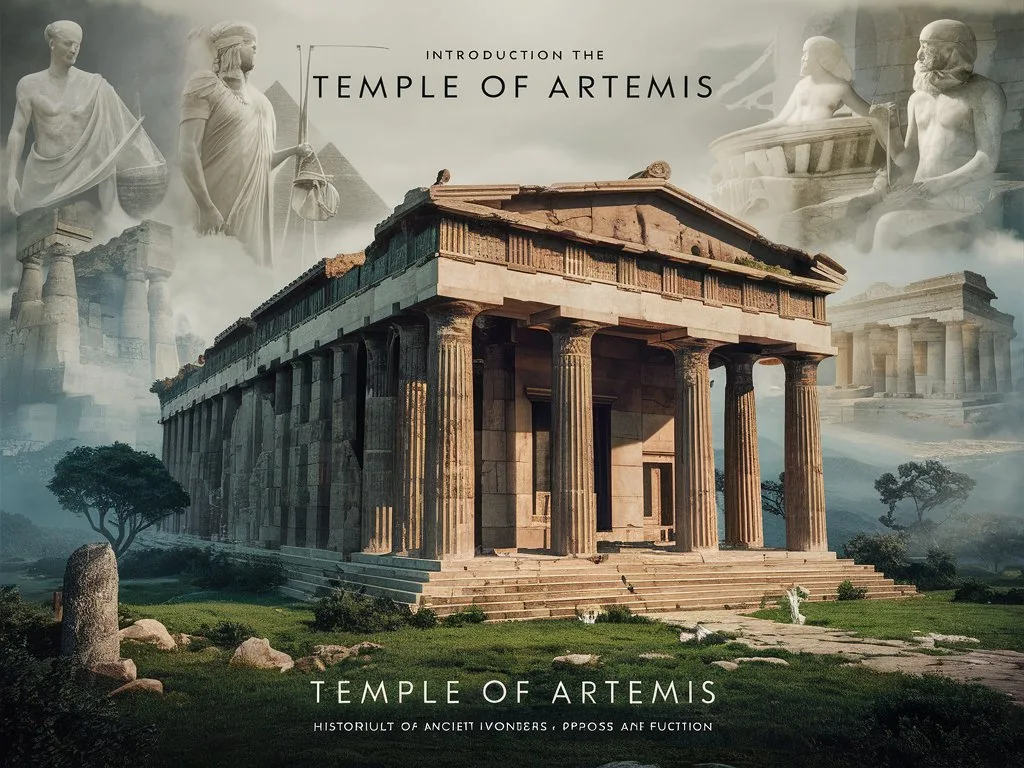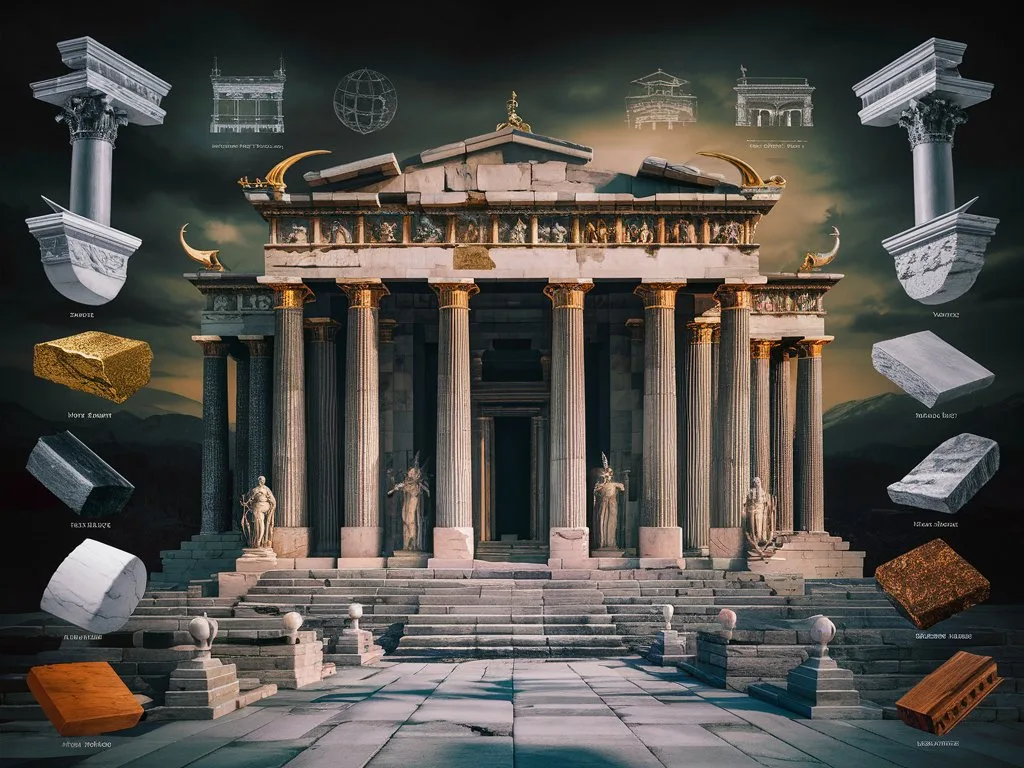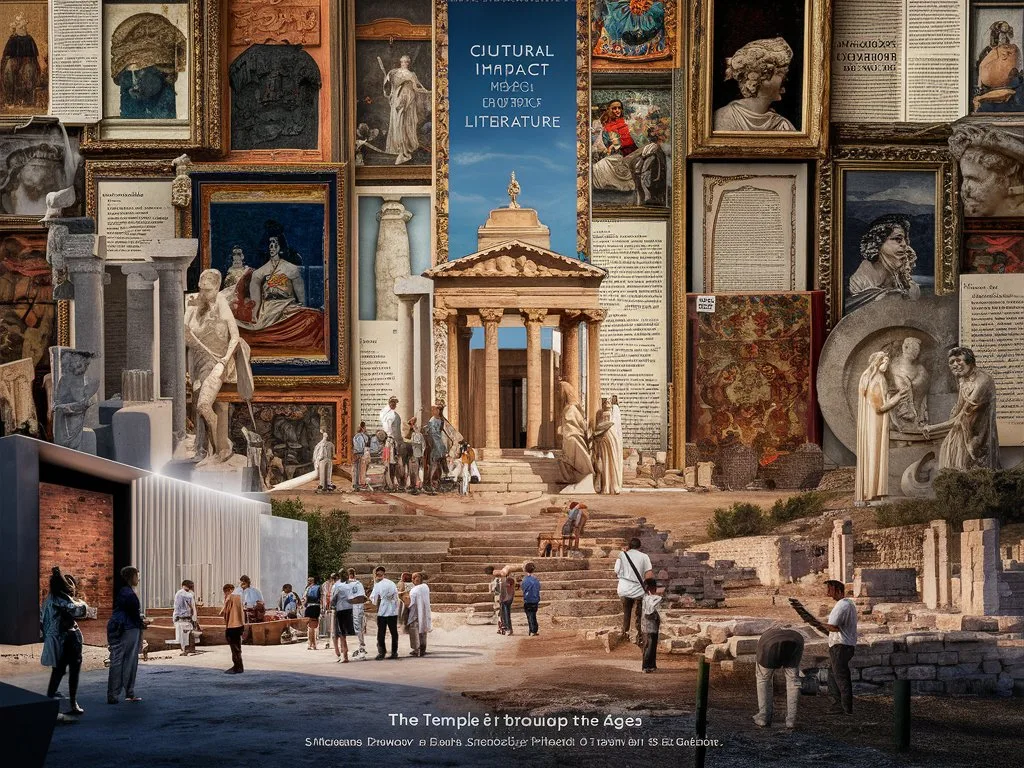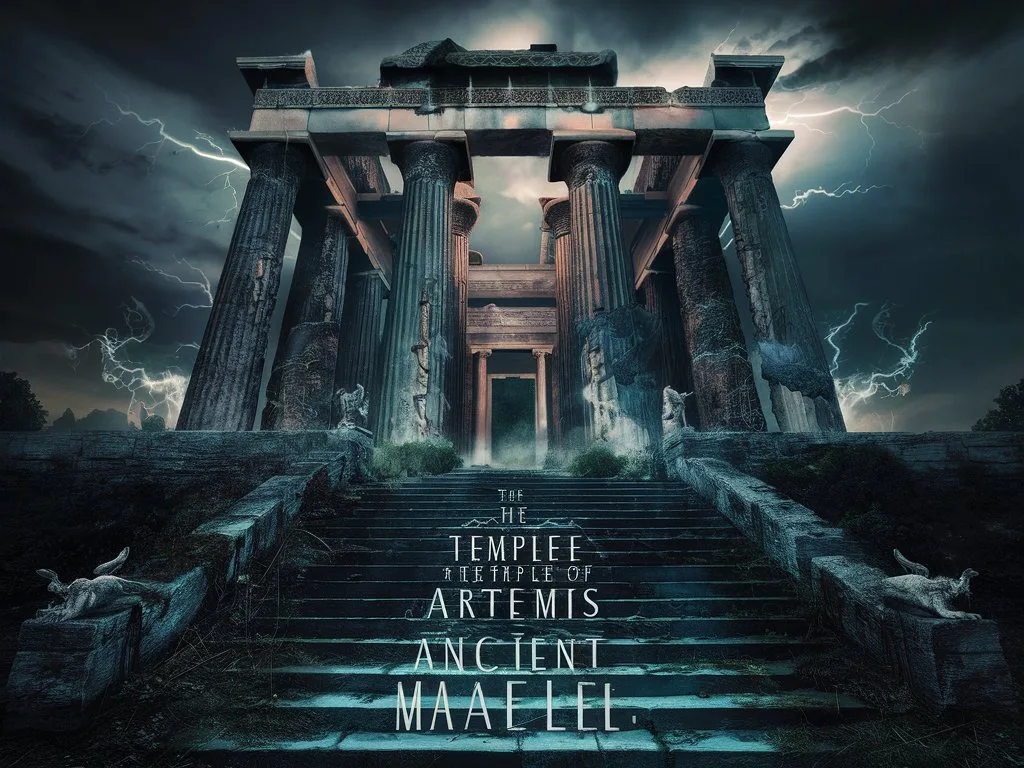Introduction to the Temple of Artemis

Historical Context
Located in the vibrant city of Ephesus, which is now part of modern-day Turkey, the Temple of Artemis has captivated historians and tourists alike since it was constructed in the 6th century BCE. This monumental structure was dedicated to Artemis, the revered Greek goddess of the hunt, wilderness, and fertility. The city of Ephesus, a bustling center of trade and cultural exchange, saw the temple rise to mirror its own grandeur and significance in the ancient world. The Temple of Artemis wasn’t merely a building; it was a reflection of the wealth and devotion of the citizens who worshipped there.
Overview of Ancient Wonders
When considering the remarkable structures of the ancient world, the Temple of Artemis shines brightly as one of the Seven Wonders of the Ancient World. As we explore these ancient wonders, it’s important to note that each serve as a testament to the ingenuity, creativity, and cultural achievements of humankind. The Temple of Artemis was not only a place of worship but also a symbol of artistic expression and architectural pioneering that captured our fascination with ancient civilizations.
Purpose and Function
The Temple of Artemis served several interconnected purposes. At its core, it functioned as a sacred sanctuary where worshippers honored Artemis with rituals and offerings. Furthermore, it was an economic engine for Ephesus, attracting pilgrims and tourists eager to pay homage, thus invigorating local commerce. Beyond its religious significance, the temple served as a cultural hub, fostering community pride among the Ephesians while becoming an integral part of their identity.
Architectural Marvels

Design and Structure
The Temple of Artemis was a sight to behold with its awe-inspiring design. Measuring approximately 377 feet long and 180 feet wide, it dwarfed many of its contemporaries. The temple consisted of 127 towering columns, each reaching a height of about 60 feet, adorned with intricate carvings that highlighted the architectural mastery of the ancient Greeks. These columns served not only a structural purpose but also became focal points of artistic expression, showcasing sculptures that depicted narratives from mythology and sacred rites. The sheer scale and design of the Temple of Artemis asserted its place as a remarkable accomplishment and a beacon of ancient architectural sophistication.
Use of Materials
Constructed primarily from high-quality marble, the Temple of Artemis represented one of the finest engineering feats of its time. The use of various stones, including limestone and bronze for decorative details, further enhanced its beauty. Frescoes and colorful mosaics adorned the interiors and exteriors of the temple, vividly illustrating the myths associated with Artemis and celebrating her divine skills. The techniques employed in construction, such as ingenious use of ramps and scaffolding, reveal innovative practices that underscore their engineering excellence, helping us understand how such monumental structures were brought to life.
Influence on Future Architecture
The influence of the Temple of Artemis extended far beyond the borders of ancient Ephesus. Its echoes can be found in Roman architecture and the designs of many religious buildings that followed. Modern cathedrals and other important structures across Europe reflect the design principles established by the Temple of Artemis, showcasing how this ancient wonder laid the groundwork for future architectural endeavors. As you stroll through these glorious buildings today, take a moment to recognize the profound impact that this temple has had on architecture as we know it.
Religious Significance

Worship of Artemis
Artemis was cherished not only as a goddess but also as a protector of women and children. Her worship involved elaborate rituals and offerings made by devoted followers seeking blessings for prosperity and fertility. One of the most significant festivals dedicated to her was the annual Artemisia, a grand celebration that attracted people from all walks of life. These traditions instilled a sense of community and connection among Ephesians, underscoring the deep reverence held for the goddess and the temple she inhabited.
Role as a Sanctuary
The Temple of Artemis functioned as more than just a place for religious rituals; it was a sanctuary for the vulnerable. Individuals facing hardships found solace within its walls, and it also welcomed pilgrims journeying across long distances to seek the goddess’s favor. Additionally, the temple became a venue for community gatherings and education, embodying its multifaceted role in the social fabric of Ephesus.
Tensions with Other Religions
As the early Christian community began to rise, the Temple of Artemis found itself in a challenging position. The emerging faith sparked tensions and transitions, highlighting the shifting cultural narratives of the time. This conflict illustrated how the temple’s significance began to wane as societal beliefs evolved, casting light on a civilization grappling with the duality of honoring ancient traditions while adapting to new ideologies.
Historical Events and Legends

Significant Historical Incidents
Throughout its existence, the Temple of Artemis encountered multiple episodes of destruction, the most significant attributed to the invading Goths in 262 CE. Each period of destruction subsequently birthed various rebuilding efforts, showcasing the resilience and devotion of its followers who sought to restore their sacred space. The narrative of the temple embodies the essence of loss and rebirth, shaping Ephesus into a city that continued to thrive despite adversity.
Myths and Stories
The stories woven into the fabric of Artemis’s legacy are just as fascinating as the temple itself. Myths detailing her birth, her journeys, and her interactions with legends of Greek mythology have considerably shaped the narrative landscape surrounding the temple. Ephesus is forever enshrined in these tales, with miracles attributed to the goddess further captivating those who hear them and adding to the temple’s allure.
Archaeological Discoveries
Recent excavations at the site of the Temple of Artemis have unveiled a treasure trove of artifacts that expand our understanding of Ephesus and its people. Among these discoveries are statues, inscriptions, and everyday items that provide a window into the rituals, social structures, and daily lives of ancient Ephesians. Each artifact enhances our appreciation for this ancient wonder and the life that once thrived around it.
Cultural Impact Through the Ages

The Temple in Art and Literature
The influence of the Temple of Artemis extends into the realms of art and literature, where it has been immortalized in the works of poets, historians, and artists for centuries. Through their words and visuals, this magnificent structure has been woven into cultural narratives that resonate with themes of beauty, spirituality, and human achievement. Simply reading about the temple in classic texts evokes its grandeur and significance in the context of human history.
Modern Perception of the Temple
In contemporary culture, the Temple of Artemis stands as a symbol of human heritage and architectural excellence. It represents our collective past and the creativity that defines our civilization. In academic discussions and educational settings, the exploration of the temple and its historical context provides invaluable insights into the lives of ancient cultures and reinforces the importance of historical preservation.
Preservation Efforts
Today, the remnants of the Temple of Artemis require ongoing preservation efforts to combat threats from natural decay and human activity. Numerous organizations work diligently to conserve these pivotal historical sites, striving to ensure that future generations can engage with and appreciate the stories of our shared human past. It is encouraging to witness these global efforts to uphold such a significant aspect of our heritage.
Conclusion

Summary of Key Points
The Temple of Artemis, with its stunning architecture, deep cultural significance, and enduring legends, offers an incredible glimpse into the ancient world. Across its many roles, the temple stands as a testament to the artistic and spiritual dedication of its creators and inhabitants.
The Lasting Legacy of the Temple of Artemis
Standing the test of time, the Temple of Artemis symbolizes resilience, beauty, and the human pursuit of meaning and connection. As it continues to capture imaginations, it reminds us of the rich tapestry of stories that infuse our shared heritage.
Reflection on Ancient Wonders and Their Relevance Today
When we reflect on the wonders of antiquity like the Temple of Artemis, we are reminded of humanity’s journey through time—our struggles, triumphs, and shared narratives. Each discovery has lessons to teach us, drawing our curiosity to delve deeper into the past and cherish what has transcended time. Embracing our history allows us to appreciate our present and shape our future, ensuring the legacy of the Temple of Artemis remains alive for years to come.
FAQ
1. What was the Temple of Artemis?
The Temple of Artemis was a large ancient temple located in Ephesus, dedicated to the goddess Artemis, who was the deity of the hunt, wilderness, and childbirth in Greek mythology.
2. When was the Temple of Artemis built?
The Temple of Artemis was originally constructed around 550 BCE, but it was rebuilt several times due to destruction from raids and natural disasters, with the most famous reconstruction completed around 350 BCE.
3. Why is the Temple of Artemis significant?
The Temple of Artemis is considered one of the Seven Wonders of the Ancient World due to its grand size, unique architecture, and the cultural significance as a major religious center for the worship of Artemis.
4. What happened to the Temple of Artemis?
The Temple of Artemis was destroyed multiple times throughout history. The final destruction occurred in 262 CE when it was looted and destroyed by the Goths. Today, only remnants of the temple exist.
5. Where is the Temple of Artemis located?
The Temple of Artemis was located in Ephesus, which is near the modern city of Selçuk in Turkey.
6. What architectural features did the Temple of Artemis have?
The Temple of Artemis was known for its large columns, intricate sculptures, and grand scale. It featured 127 columns, each standing about 18 meters tall, and was adorned with beautiful decorations.
7. Is there an archaeological site for the Temple of Artemis today?
Yes, visitors can see the ruins of the Temple of Artemis in Ephesus. There are several remains and artifacts displayed at the site, providing insights into its historical significance.
8. How did the Temple of Artemis influence later architecture?
The Temple of Artemis set architectural standards for future temples and buildings, influencing Greek and Roman architecture with its use of columns and symmetry.
9. What role did the Temple of Artemis play in ancient society?
The temple served as a significant religious center where people came to worship Artemis. It was also a marketplace and a political hub, playing a crucial role in the social and economic life of Ephesus.
10. Can you visit the Temple of Artemis today?
While the original temple is no longer standing, visitors can tour the archaeological site in Ephesus. There is also a museum nearby that exhibits artifacts related to the temple and ancient Ephesus.

Can you be more specific about the content of your article? After reading it, I still have some doubts. Hope you can help me.
Yes, thank you for sharing your thoughts. How can I help you?
Thank you for your sharing. I am worried that I lack creative ideas. It is your article that makes me full of hope. Thank you. But, I have a question, can you help me?
Your point of view caught my eye and was very interesting. Thanks. I have a question for you.
Thank you for your sharing. I am worried that I lack creative ideas. It is your article that makes me full of hope. Thank you. But, I have a question, can you help me?